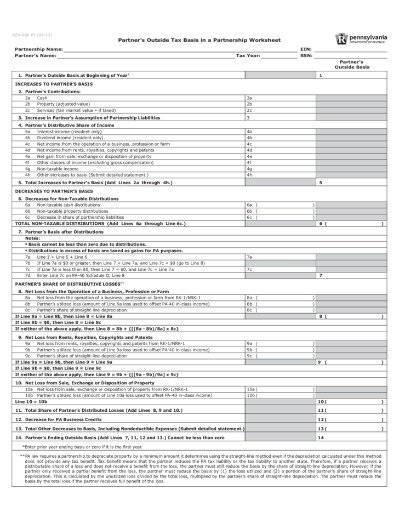How to Conduct Employee Evaluations
Content

Whether you hold reviews yearly, quarterly, or informally on a weekly basis, you must be as consistent with your schedule as possible. Employee evaluations must be something your employees are expecting, and holding them routinely allows them to know it’s approaching. If you’re not clear and concise when delivering employee evaluations, you risk having your employees leave the evaluation with more questions than answers. For example, if you ding an employee for poor time management, you should have examples of missed deadlines or instances when other team members had to take up their slack. Here are a few steps to follow when conducting employee performance reviews.

Please provide an example of a scenario where you saw room for improvement. This part of the employee evaluation is all about working out a path forward for your employee, and showing that you and your company are there to support them. The idea here is to encourage your employee to reflect on their own performance and chart a path forward. Each of these questions is a conversation starter and should be paired with your own input and suggestions.
Performance review pitfalls to avoid
But the Rashomon effect is alive and well in firms; two people can observe the same event or outcome yet interpret it differently. If you set unrealistic or impossible goals and standards, employees will have little incentive to do their best if they know they will still fall short. Don’t make your standards too easy to achieve, but do take into account the realities of your workplace. Performance standards describe what you want workers in a particular job to accomplish and how you want the job done.
- Other studies, in areas ranging from health care to voting to energy usage to drinking habits, find that these reminders significantly affect behavior and improve outcomes.
- Firstly taking stock of the frequency of your current performance appraisal process – perhaps you still conduct them on a yearly basis.
- Make sure your standards are achievable and directly related to the employee’s job.
- The more data you can provide to add context to any difficult or even positive discussions, the more real your conversations will be.
A performance review meeting requires preparation and collaborative talking points. Use a tool like Fellow so everyone can contribute to the conversation and show up prepared. Review how detailed you are getting in the performance review process. Don’t only use numbers and stats, but don’t be vague with the reasoning behind the performance feedback you are giving. With each of these, you can then create specific performance appraisal phrases.
Why is an employee evaluation important?
Consistency in employee evaluations will give your employees clear milestones to work toward and prioritize their tasks to achieve their goals. It will also ensure the desired level of transparency between employee and manager by guaranteeing honest conversions on a regular basis. When establishing SMART goals, work with your employees to establish their ambitions, strengths, and desired responsibilities. They can, and should, include development goals and expected outcomes. Remember, the point of an employee evaluation is not only to evaluate current achievements, but to improve over time. Employee evaluations are key to establishing clear expectations and boundaries between employees and managers.

Still, this part of an evaluation is essential for employee development. Employees can easily dispute any claims about how well they do their job. That’s why employee performance proof of work tools are a big help here.
Step 1 – Revisit the employee’s job description
Supervisors must encourage employees to complete the self-evaluation. If the employee fails to complete the self-evaluation by the due date, the supervisor can request that Human Resource Management move the form forward, bypassing the Self-evaluation step. The more time you dedicate to preparation and discussion, the smoother the employee evaluation will go and the more enjoyable it will be for both sides. Is the employee fulfilling the basic requirements of the job as put forth in the job description? This information can have a drastic impact on what is said when you meet with your employee.
- All performance evaluation actions are performed in thePerformance Management System.
- Talk to employees about issues and give them a chance to improve.
- Some employees in the performance review conversation may prefer you to be more blunt, while others will need some easing in.
- You might lose credibility and the employee could perceive the evaluation as biased against them.
- Other times it might mean lending an ear or sharing words of wisdom.
- Even better, instead of reading constructive feedback verbatim, create a summary of the feedback that incorporates common themes.
Armed with this inHow To Conduct An Employee Evaluationation, you can take steps to give them the help they need to develop and grow. Analyzing which results an employee is bringing to the company is another major issue. The HR department and the team must be paying attention to the reasons that motivate an employee and engage him in projects. Then, employees are categorized according to these concepts and can be promoted, maintained, or dismissed. This model aims to estimate the cost/benefit relation of an employee, defining in values his production in the face of expenses involved in keeping him in the company.
Continual feedback
Allow employers to recognize and promote top-performing employees. Provide staff with concrete information about where they stand and how they can improve. Employee evaluation form templates that are free to download. Talk to employees about issues and give them a chance to improve.
The True Obstacle to Hybrid Work: Productivity Paranoia – DataDrivenInvestor
The True Obstacle to Hybrid Work: Productivity Paranoia.
Posted: Wed, 01 Mar 2023 11:37:30 GMT [source]
An employee performance review process is not always an easy interaction, but it’s a much needed one. It requires a healthy balance between criticism and praise, and the establishment of attainable objectives for the future. As complicated as an employee evaluation may seem, there are a lot of benefits both managers and employees can gain. We hope these suggestions help you out when having your own employee evaluations.
360-degree feedback
An employee evaluation should feel like a typical conversation — but that doesn’t mean you shouldn’t have a plan. One of the best ways to put your team’s and organization’s values first is to set up a 360-degree feedback loop. Employers should use self-evaluations to make decisions about each employee.
